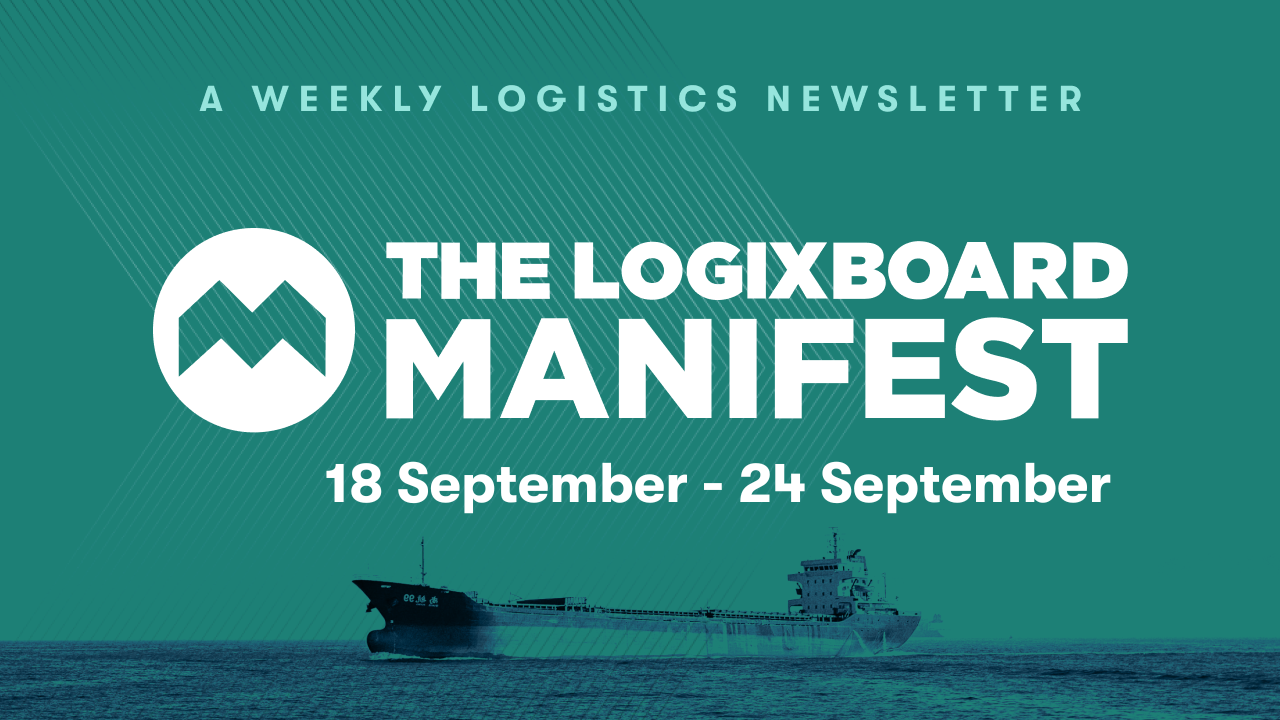In this article
![]()
Spotlight on the Suez Canal Authority (SCA) announcing a 15% hike in canal charges next year.
![]()
Highlights on stalled West Coast labor talks as worker disputes heighten, big ocean shipping lines turning to invest in aircraft for freight, and more.
![]()
Trending discussion on lack of interest from port authorities on the Biden administration’s push to keep ports open 24/7 to solve the congestion problem.
Your Weekly Spotlight
The Suez Canal is one of the most important routes for global trade and vessels across the world use this critical waterway to ferry goods. The 193 km (120-mile) Suez Canal connects the Mediterranean Sea at the canal’s northern end to the Red Sea in the south and provides the shortest sea link between Asia and Europe. In fact, the vital waterway was blocked when the 400m long (1,312ft) mega ship Ever Given became wedged across it after running aground amid high winds. Global trade was disrupted as hundreds of ships were stuck in traffic jams.
This week, the Suez Canal Authority (SCA) chairman and MD Ossama Rabiee has announced a 15% hike in canal charges next year. The 15% hike will apply to all vessels, except cruise ships and bulk carriers, which will see a 10% increase. According to Mr. Rabiee, this hike will be a balanced and flexible strategy to compensate the SCA for rising costs in a volatile global economy.
This hike comes at a time when economies all over the globe are going through a wave of inflation and increased prices. According to the SCA, the hike is a reaction to the global trend. Mr. Rabbiee pointed out how there have been considerable and consecutive increases, especially in containership freight rates, compared with those recorded before the Covid-19 pandemic.
These price increases will be reflected in the high operating profits achieved by navigational lines throughout 2023, according to the Suez Canal Authority. The SCA also pointed to rising energy costs for both crude oil and LNG and global inflationary pressures as being behind the substantial boost in its prices.
Key Takeaway
With the global supply chains facing cooling demand and increasing inflation, service providers across geographies will need to adapt. The Suez Canal waterway is a crucial artery of international trade. Deciding on Suez Canal transit tolls rests on a variety of metrics, of which the most significant is the average freight rates for various types of vessels. As container freight prices rise, shippers will make bigger profits.
The Suez Canal Authority determined an increase in tolls is in accordance with the price disruptions seen in other aspects of the supply chains. The price hike may also be a strategy to help canal authorities avoid situations similar to the Ever Given debacle.
Highlights
- West Coast port labor talks in the US are stalled as dock worker disputes hit the region’s big trade gateways, according to shipping industry officials who fear the negotiations could take months to resolve.
- Big ocean shipping lines turn to planes as supply-chain snarls deepen. Containership operators buy aircraft and hunt for aviation partners as customers opt for pricier but more reliable air shipping.
- While supply chain woes seem to ease with a decrease in demand, industry insiders warn of overly optimistic predictions for the resurgence of the supply chain post the COVID-19 pandemic in this opinion piece.
- While a rail strike crisis was seemingly averted across the US, there are plenty more bumps in the road for investors in the coming weeks. Active investors have had a tough 2022, as over half of US large-cap equity fund managers underperformed the S&P 500 in the first half of the year.
- The cost to rent ships that carry containerized goods stayed near record highs into this summer. But now, indexes that measure container-ship rental rates are now dropping like a stone. Ship-charter indexes have nose-dived in recent weeks.
Trending
Port congestion continues to be an issue across the globe, spilling into rail and roadways. Ports and authorities are on the alert for sustainable long-term solutions to the problem. The White House planned to initiate a move to get ports across the US operational 24/7 to battle the congestion monster. But at the recent ASCM Connect Annual Conference, White House Port and Supply Chain Envoy Gen. Stephen Lyons announced that the strategy will continue to shift.
Essentially, the Biden administration’s plan for addressing supply chain congestion will transition from urging ports to move to 24/7 operations as it failed to get significant traction among ports and businesses due to the cost involved. As Gen. Lyons puts it, in an incentive-driven economy, people are likely to choose options with high returns on their investments. Instead, efforts will remain focused on data collection and identifying potential incentives to encourage shippers and carriers to move cargo faster.
Several West Coast ports considered a container dwell fee last year to speed cargo flow, and a similar fee was proposed at the New York and New Jersey port complex earlier this year. Such incentives encourage port officials to ensure that more ships are waiting to berth so that they incur higher demurrage charges. In this environment, transparency, data sharing, efficiency, and timely management of port resources are key.
Keeping ports operational 24/7 may not be a popular solution in this scenario, but port authorities need to figure out the incentives that actually work towards decreasing port congestion and increasing efficiency.

